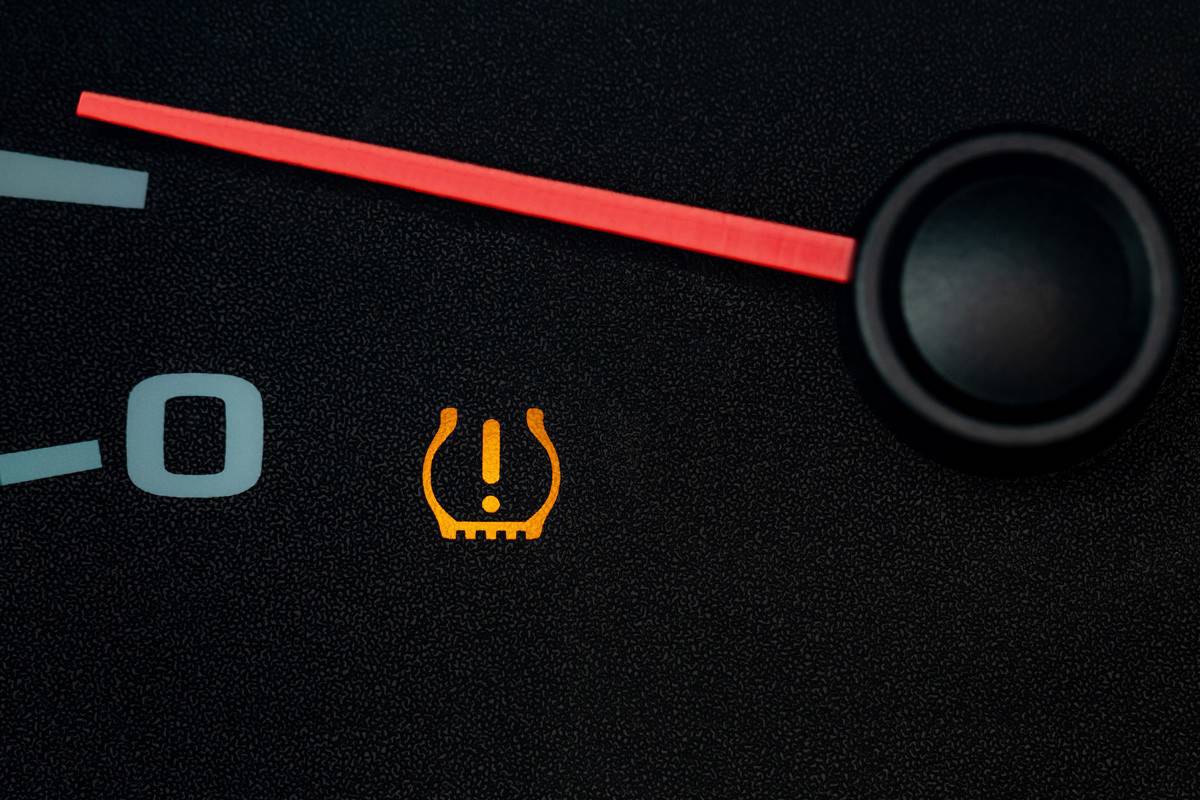Tire pressure monitoring systems (TPMS) are government-mandated automotive features for all vehicles in America. Although these systems help promote road safety, sometimes they can also malfunction and cause undue frustration. If you're a Ford F-150 owner experiencing TPMS fault alerts on your dash, what do you do? We've done the research for your convenience.
Before doing anything with your TPMS components, you need to ensure what the cause of your TPMS alert is. First, you need to check if you have the correct wheel and tire assemblies and proper tire pressure.
If you are sure that there's nothing wrong with your wheels and tires, then the most common culprit is a malfunctioning tire pressure sensor. In this case, you may need to clean, tighten, reset, or replace these sensors.
Are you having trouble with your F-150's TPMS? Continue reading because we have some great tips to help you turn off that annoying TPMS fault alert.

How Do You Turn Off The Tire Sensor Fault On A Ford F-150?

Even though a TPMS provides additional safety, it does not substitute for the driver's responsibility to check the vehicle's tires regularly. If a TPMS warning light or message appears, then the first thing to do is check the tires.
- Is your F-150 using a uniformly-sized set of wheel and tire assemblies?
- Are all the tires mounted and inflated properly?
- Do all the tires have working TPMS sensors?
- Were all the TPMS sensors properly programmed to the vehicle's TPMS module?
If you answered "yes" to all of the four questions above, then we can start diagnosing a little deeper. To do this, we need to understand Ford's TPMS warnings and what they mean.
Tire Pressure Low Alert

Your Ford TPMS works to alert you if you need to add air to your tires. If the system detects low tire pressure, it will display a "Tire Pressure Low" message on your instrument cluster. It also will illuminate the TPMS telltale warning light.
Please also note that cold weather affects your tire pressure significantly. According to studies, your tires can lose one to two PSI of air pressure for every 10-degree Celsius drop in temperature and cause a TPMS alert.
Ford's F-150 owner's manual also says that the TPMS telltale light may flash or stay on if you use a differently-sized spare tire during emergencies. In this case, the system may or may not display any information message.
If your TPMS displays a low tire pressure warning, then you should check your tires' air pressure as soon as possible. If you're using a spare tire, then you should have your regular road tire fixed and mounted as soon as possible.
In many cases, these two processes should deactivate the low tire pressure warnings.
Incorrect Tire Pressure Readings
In some instances, your TPMS may fail to detect the correct tire pressure and subsequently trigger a low tire pressure alert.
- When you change to a new set of tires
- After tire rotation
- When you switch to and from winter tires
Each sensor has been programmed to measure the air pressure inside a specific wheel and tire assembly. If you change the tire or the wheel, then the sensor will read the tire pressure differently.
Moreover, if you rotate your tires, then your TPMS module will get confused about the sensors' positions.
In these cases, you will need to do a TPMS reset. You may go to your Ford dealership for this process, or you can save some money and do it yourself.
Resetting your TPMS allows your sensors and your module to "learn" about each other. This way, they can communicate correctly and display the right information to the driver.
How Do You Reset The TPMS On A Ford F-150?

Here are the steps to reset your Ford's TPMS:
- Start up and drive your F-150 above 20 mph for at least two minutes in order to "wake up" the sensors.
- Park the vehicle in a safe, unobstructed space with access to a tire pump/inflator.
- Turn the ignition off.
- Turn the ignition to the "On" position, but do not start your engine.
- Within 10 seconds after turning the ignition to the "On" position, press the hazard light button six times (another way of saying switch the hazard lights on and off three times).
- After the sixth button push, your truck should sound its horn once to confirm that it is now in reset or relearn mode.
- A TPMS message on your dashboard will tell you to "Train Left Front Tire."
- Within two minutes after the message, you need to finish training the left front tire's sensor.
- To train a tire sensor, unscrew the tire valve cap and push on the valve core to release some air until the vehicle's horn honks once.
- The single honk confirms a successful TPMS training for one tire. Within two minutes of the honk, you also need to finish training the next tire.
- Move clockwise around the vehicle to your front right tire and repeat the training. Use the vehicle's single horn honk as your indicator to move on to the next tire.
- Once you've trained all four of your tires in a clockwise sequence, step back inside the vehicle.
- Your instrument console should have a "Training Complete" message. Confirm this by clicking "OK."
- Turn the ignition off to exit the TPMS reset mode, and then turn it back on again.
- Use the tire pump to inflate all tires to the recommended pressure.
TPMS Fault Alerts
In addition to displaying low tire pressure warnings, Ford's TPMS also alerts the driver when something is wrong with the system itself. When this happens, your instrument cluster will display either of the two information messages:
- Tire Pressure Sensor Fault
- Tire Pressure Monitor Fault
During both instances of faults, the TPMS telltale light will flash for one minute before remaining steadily on. This information message and telltale light sequence will continue with every vehicle start as long as the TPMS problem persists.
What Causes Tire Pressure Sensor Fault?

Most modern F-150 models use direct TPMS, which means that each of the truck's tire assemblies has a battery-powered RFID sensor. These sensors detect the air pressure inside the tires and relay the information to the TPMS module in the vehicle.
The tire pressure sensor fault message can activate due to several reasons. However, most of them mean that the TPMS module in your vehicle cannot read your sensors' RFID signals properly, if at all. Here are some potential culprits:
- Erased sensor programming
- Signal interference from improperly-shielded in-vehicle gadgets or devices
- Low sensor battery charge
- Loose sensor mounting
- Damaged sensor
- Dirty sensor
The only exception is when you mount your spare tire after getting a flat road tire. A dissimilar-sized spare tire may or may not trigger the tire pressure fault message.
Older TPMS sensors usually last around five to six years. However, newer sensors like those on the recent F-150 models can last from five to 10 years. This lifespan depends highly on the sensors' battery life.
Of course, TPMS sensors can also malfunction due to improper mounting or physical damage, especially during tire repair or replacement.
For example, Ford's emergency tire repair kit uses a pressurized tire sealant chemical that can get into the TPMS sensor and cause the latter to fail.
In these cases, you may try to tighten, clean, or even reset your TPMS as detailed in the previous section. However, in some cases, you may need to buy a new set of tire pressure sensors.
Check out these F-150-compatible TPMS sensors on Amazon.
Install And Program New TPMS Sensors
If you need to install new TPMS sensors, then you will need to demount your tires. Although some enthusiasts have garages and tools to do this, many car owners may need to get help from professional tire service centers.
However, once you get the installation done, you can program the sensors yourself. Check out this video on how to program your TPMS to recognize a new set of tire pressure sensors.
Many Ford models, including the F-150, have two ways to enter the TPMS reset mode. We've discussed the first one in the previous section, but here's the second method:
- Get inside the vehicle and shut all the doors.
- Put your key in the ignition cylinder, but do not turn the key.
- Step on and release the brake pedal once.
- Cycle the ignition to the "On" position three times.
- Step on and release the brake pedal once more.
- Repeat cycling the ignition to the "On" position three times. The third cycle should trigger the vehicle's horn to honk.
As with the first method, this honk confirms that your Ford is now on its TPMS reset mode. As before, you need to train your tires in a clockwise sequence starting from the left front tire.
This time, however, you will need to use a TPMS reset tool to help your system recognize the new set of sensors.
Check out this F-150-compatible TPMS reset tool on Amazon.
Wrapping Up
Your F-150 can get a tire pressure sensor fault if you have damaged, undetected, or unprogrammed sensors. Additionally, you can also get a fault alert if you mount a dissimilar spare tire after getting a flat.
You may try to clean, reinstall, reset, or replace your sensors with new ones. If the culprit is the spare tire, then you need to get the road tire fixed and reinstalled as soon as possible to remove the fault notification.
Thank you very much for reading. We hope we were able to help you solve your F-150's TPMS fault problem.
For more interesting reads about Ford and other automotive topics, you may also check these great articles below:
How Long To Charge A Ford Lightning


